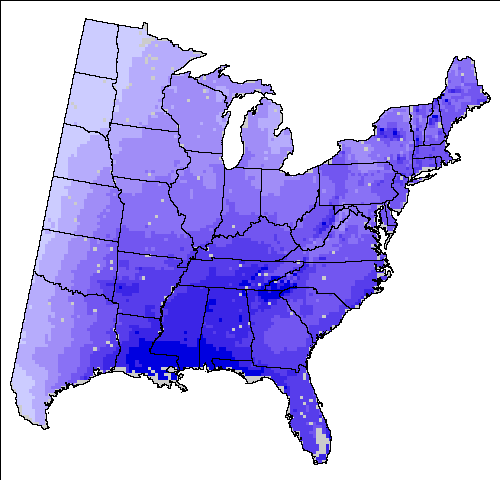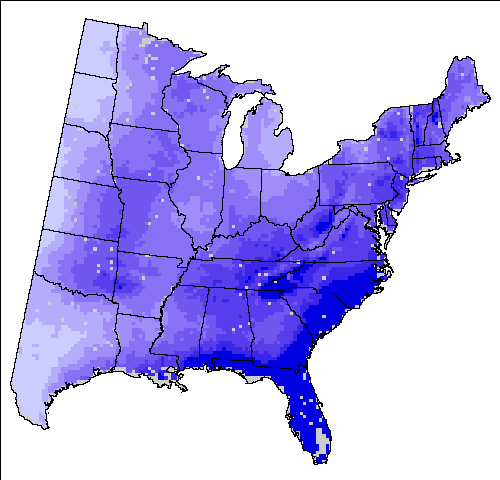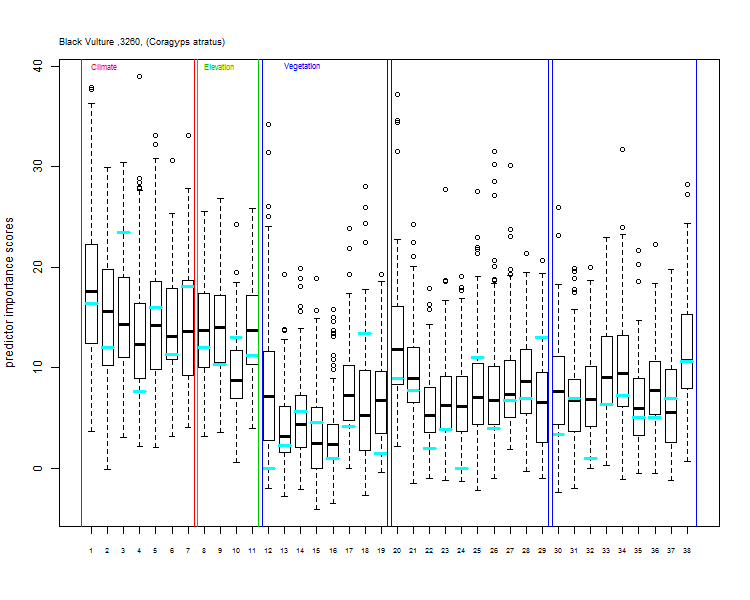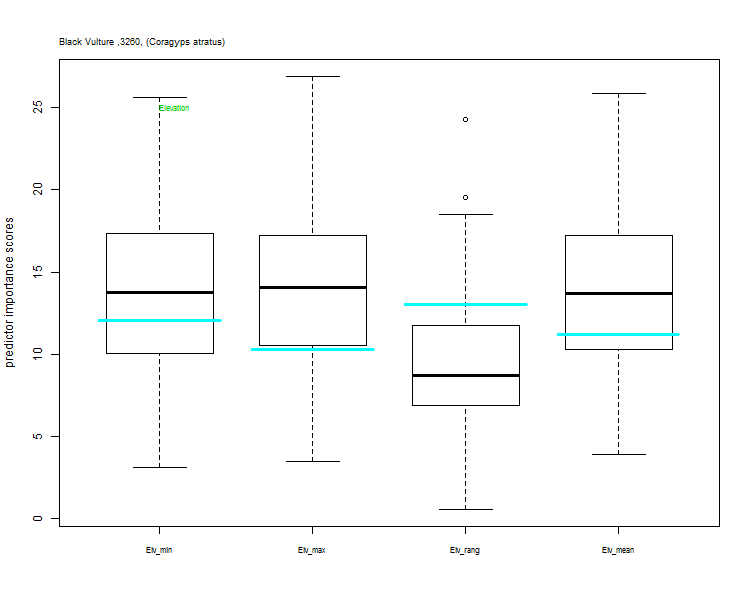Black Vulture (Coragyps atratus)Reliability of Model: Medium 
Climate Change Scenario Maps  Help »
Help »
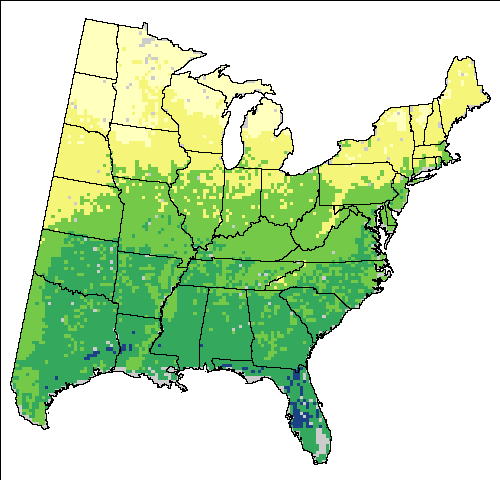
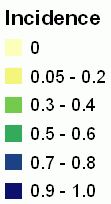
Potential Changes in Abundance and Range (Future) |
|||||||||
|---|---|---|---|---|---|---|---|---|---|
| GCM SCENARIO | % Area Occ | Ave IV | Sum IV | Future/Current IV | |||||
| Current Modelled | 44.6 | 0.313 | 1362.4 | ||||||
| Current Breeding Bird Survey | 3.3 | 0.381 | 120.8 | ||||||
| HadleyCM3 – A1FI (High, "Harsh") Climate Scenario | 68.8 | 0.308 | 2066.5 | 1.517 | |||||
| PCM – B1 (Low, "Mild") Climate Scenario | 51.5 | 0.324 | 1628.7 | 1.196 | |||||
| Avg. of 3 GCMs – A1FI (High) Climate Scenario | 64.5 | 0.308 | 1944 | 1.427 | |||||
| Avg. of 3 GCMs – B1 (Low) Climate Scenario | 57.1 | 0.329 | 1832.7 | 1.345 | |||||
Notice:
This is an version 2 of the Climate Change Bird Atlas. You can view the previous Black Vulture page or browse the previous Bird Atlas. Version 2 of the Bird Atlas is based on Version 3 of the Climate Change Tree Atlas.

Species Information
- Family:
- Cathartidae
- Breeding Status:
- resident
- Primary Breeding Diet:
- carrion
- Habitat:
- unclassified


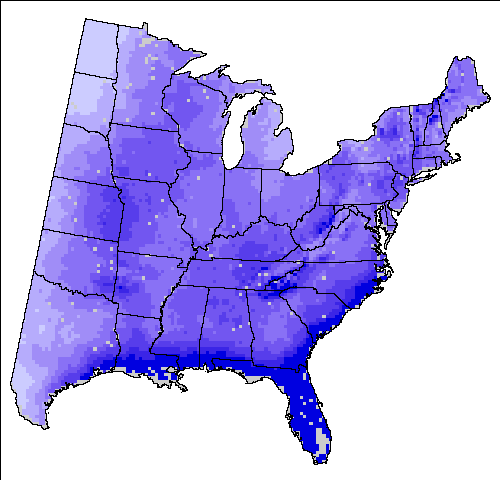

 Click and drag the orange handle over the maps to compare.
Click and drag the orange handle over the maps to compare.
